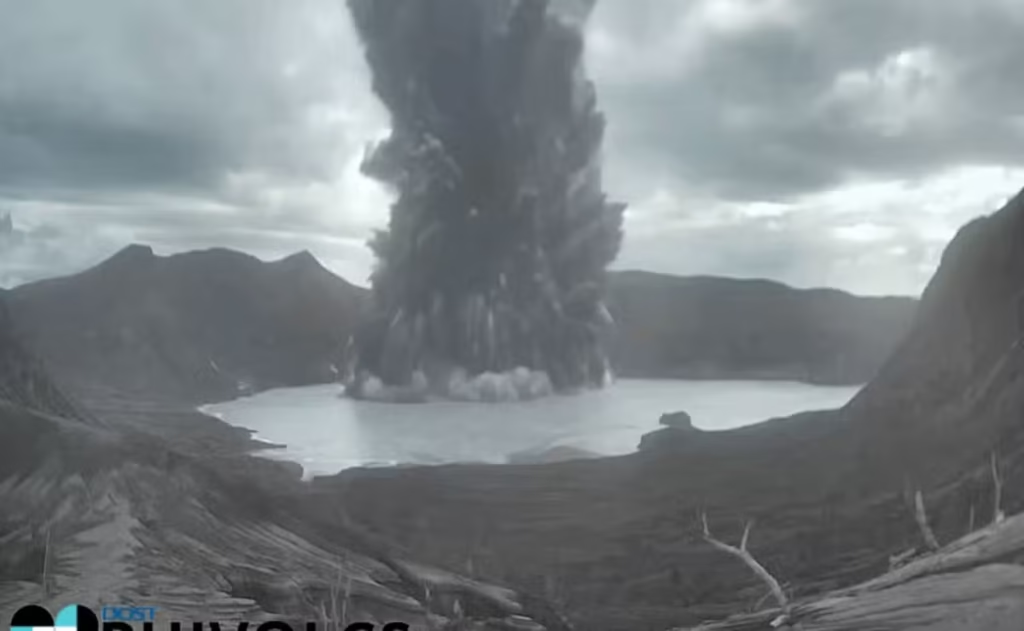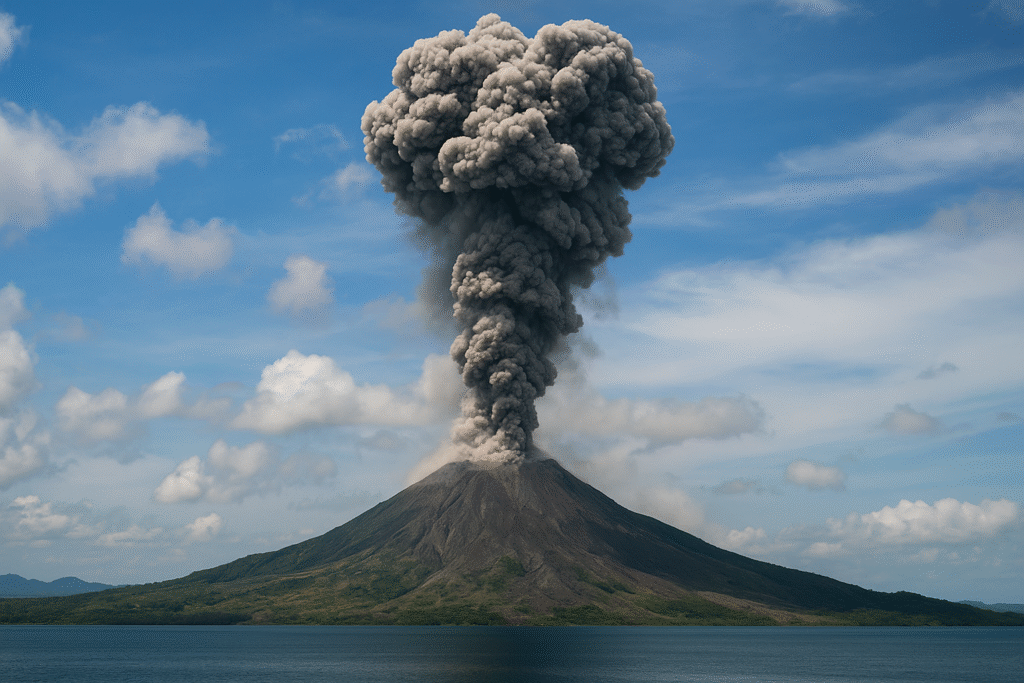Taal Volcano is acting up again. And even though it’s officially under Alert Level 1, the recent activity is raising serious questions among locals and scientists alike. Let’s break down what’s really happening — in simple words.
A Morning of Eruptions
On Sunday morning, Taal Volcano recorded three short phreatomagmatic eruptions at the Main Crater. Each burst lasted only a few seconds, but they were enough to send steam and volcanic gases shooting up into the sky.
According to PHIVOLCS, the country’s volcano monitoring agency, these eruptions were caused by magma interacting with water inside the crater lake. When that happens, pressure builds up — and steam explosions follow. The resulting ash plumes climbed several hundred meters high, briefly clouding the area before drifting southwest.

What Is a Phreatomagmatic Eruption?
It sounds like a mouthful, but it’s actually simple. A phreatomagmatic eruption happens when magma meets groundwater or lake water. The intense heat flashes the water into steam, creating a violent, short-lived explosion.
This is different from a purely phreatic (steam-driven) eruption, because in phreatomagmatic activity, magma is directly involved — meaning there’s real movement underground. That’s what worries scientists.
The Volcano Is “Quiet,” But Not Exactly Calm
Despite the activity, PHIVOLCS kept Taal at Alert Level 1. That level means the volcano is still in an “abnormal condition”, but there’s no imminent eruption threat. However, monitoring data paints a more active picture. In the past 24 hours alone, 33 volcanic earthquakes were recorded. That’s not normal background noise — it suggests magma and gases are still moving below the surface.
PHIVOLCS also reported high sulfur dioxide (SO₂) emissions, reaching thousands of tonnes per day. That’s the gas that gives Taal’s air that sharp, acidic smell — and it’s a key sign of magma degassing.
Air Quality and Health Risks
The release of sulfur dioxide means nearby towns, especially in Batangas Province, can experience vog — volcanic smog. It can irritate the eyes, throat, and lungs, especially in kids, the elderly, and people with asthma. Residents are advised to wear masks, stay indoors when the air smells of sulfur, and avoid outdoor activities near the Permanent Danger Zone (PDZ). Boating on Taal Lake is still strictly prohibited.
A Look Back: Why Taal Always Deserves Respect
If you’ve followed Taal’s history, you know it’s one of the Philippines’ most active and unpredictable volcanoes. Its 2020 eruption displaced thousands and covered nearby towns in thick ash. The current minor eruptions might seem small compared to that event, but scientists warn they could build up pressure over time. Volcanic systems often show patterns of unrest before larger activity. That’s why continuous monitoring is crucial — and why residents are urged to stay alert even at Level 1.

Scientists Keep Watching
PHIVOLCS is keeping a close eye on:
- Seismic activity (earthquakes under the volcano)
- Gas emissions and plume height
- Crater temperature changes
- Deformation or ground swelling around Taal Lake
Any significant shift in these indicators could lead to a raised alert level. For now, it’s a waiting game — one that demands patience and preparation.
For an in-depth look at how Tropical Storm Melissa developed into a major threat—bringing heavy rains, flooding and powerful winds across Jamaica and Haiti—check our full update here: Tropical Storm Melissa 2025.
What Locals Should Remember
Even if Taal looks calm from a distance, it can erupt suddenly without warning. That’s the danger of volcanoes like this — beauty mixed with unpredictability. People are urged to:
- Follow official advisories from PHIVOLCS and local government.
- Avoid the Permanent Danger Zone (within 7 km of the Main Crater).
- Prepare emergency kits and evacuation plans in case alert levels rise.
Final Thoughts
Taal Volcano’s latest eruptions may be short and subtle, but the mix of phreatomagmatic bursts, 33 volcanic earthquakes, and strong gas emissions shows it’s very much alive. The mountain isn’t silent — it’s whispering warnings. And while scientists haven’t raised the alarm just yet, these signs remind us that Taal deserves both respect and readiness.

Samsung Galaxy Watch Ultra (2025)
Take on every adventure with Samsung’s toughest smartwatch yet. Featuring a premium titanium build, stunning AMOLED display, advanced health tracking (ECG, SpO₂, sleep insights & more), and a battery that lasts up to 3 days—this is more than a watch, it’s your ultimate wrist companion. READ MORE
